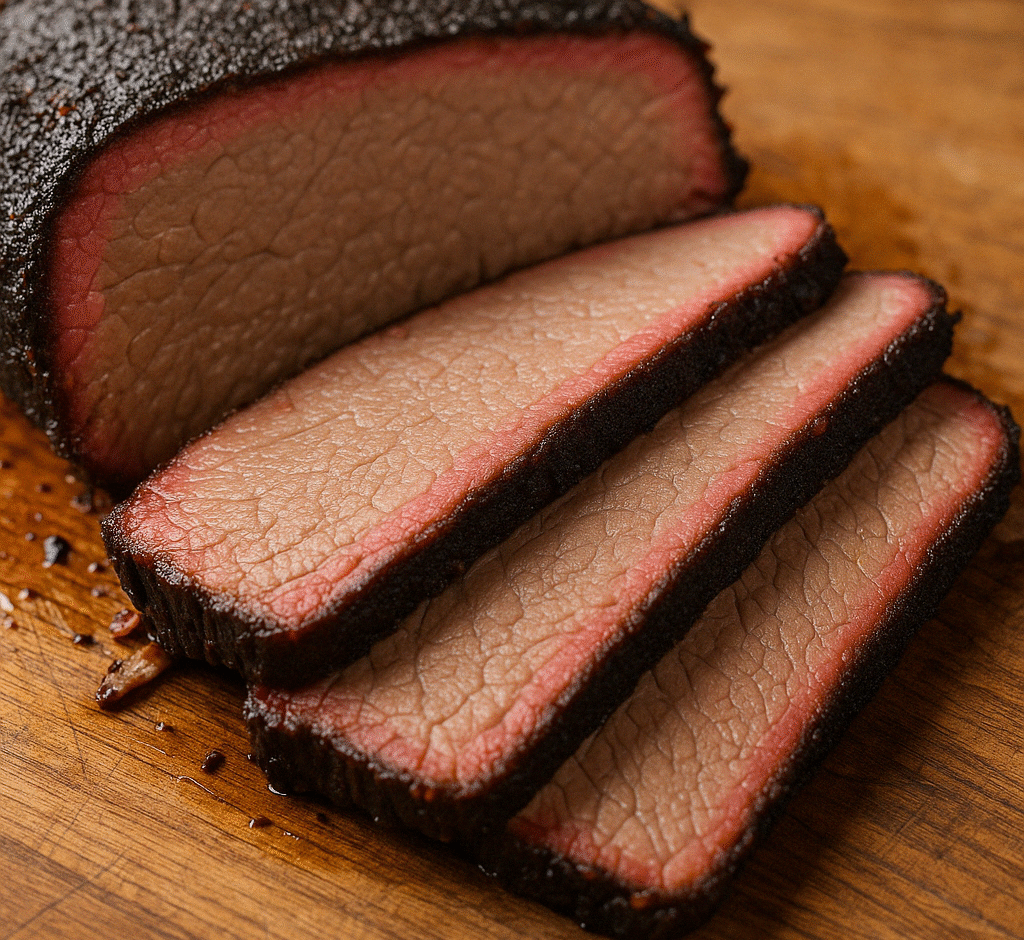
Is the smoke ring really a sign of great BBQ? Discover the truth behind this famous pink ring and why flavor matters more than color.
What Is the Smoke Ring?
If you’ve ever sliced into a brisket or pork shoulder and noticed a pinkish ring just beneath the crust, congratulations—you’ve spotted the smoke ring.
This colorful halo is often celebrated in the BBQ world as a mark of true pitmaster skill. But here’s the real deal: the smoke ring looks cool, but it doesn’t actually affect flavor.
What Causes the Smoke Ring?
It’s all about chemistry.
The pink ring is created when nitrogen dioxide (NO₂) from wood smoke binds with myoglobin, a protein in meat that gives it a reddish hue. This reaction stabilizes the pink color during cooking, even as the interior continues to cook through.
Here’s how it happens:
- Wood smolders and produces NO₂ gas
- Gas dissolves on the surface of the meat
- It reacts with myoglobin
- A stabilized pink ring forms during the first few hours of the cook
The ring usually extends about a quarter to half an inch into the meat—right under that dark, smoky bark.
What It Isn’t
The smoke ring is not a flavor indicator. You can have a deep smoke ring and bland BBQ. You can also have no ring and insanely delicious, smoky meat. It’s mostly about looks and tradition.
You don’t need a ring to prove your BBQ is good. Some pellet smokers and electric smokers, which produce cleaner smoke, often result in little or no ring—but still taste phenomenal.
Can You Fake It?
Yup. You can create a smoke ring using pink curing salts (like Prague Powder), which contain sodium nitrite. Some commercial BBQ joints do this to guarantee that pink ring even when the meat is cooked in ovens—not smokers.
But that’s cheating. You want your BBQ to earn its colors the honest way—through real smoke, real time, and real fire.
Tips to Maximize a Natural Smoke Ring
Want the real deal? Here’s how to encourage it naturally:
- Use charcoal or wood: Both produce the gases needed for a ring.
- Start with cold meat: The reaction happens early on, so cold meat gives you more ring time.
- Avoid wrapping too early: Wrapping meat stops smoke from reaching the surface.
- Don’t block airflow: Let smoke circulate around the meat.
Still, even when you do everything “right,” the ring might not appear. And that’s OK. It’s the flavor that counts.
Final Thoughts
The smoke ring is a badge of honor—but it’s not the whole story. Don’t obsess over it. Focus on flavor, tenderness, and technique. If the ring shows up, that’s just BBQ bonus points.
